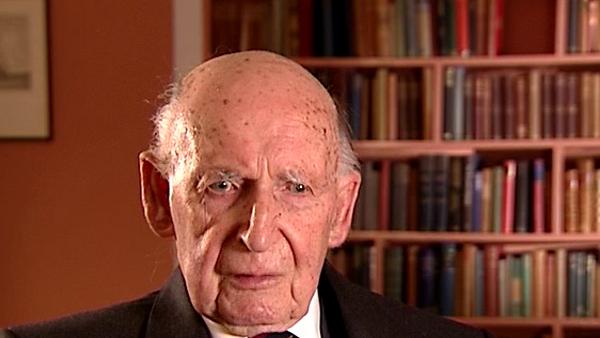NEXT STORY

Wouldn't it be marvellous to have a 218ft steerable telescope?
RELATED STORIES

NEXT STORY

Wouldn't it be marvellous to have a 218ft steerable telescope?
RELATED STORIES



He began these observations of the radiation from space, which had been discovered by Jansky in 1930, '31, and had really only been studied much further by Reber, in America during the war. All that was known then was that from somewhere in the galaxy, radio waves were being emitted. Hey, in his work, had located the general distribution of these radio emissions, this radio emission from space, and had indicated that there might be some specialised sources of it in the galaxy, and the only thing we knew then was that the main radiation appeared to be emanating from somewhere in the galaxy. Hanbury Brown and Hazard discovered that by laboriously slackening and tightening the stays, which held the tubular mast to the telescope, they could change the direction of the beam up to about 15 degrees from the zenith. And so, by great good fortune, the great spiral of the... in Andromeda M31, one of our nearest nebulae passed through the beam, within that region of space, and it was their work, which I must say, it was unbelievably laborious because they had to work under frantic conditions in slackening this aerial and changing it, changing the beam. But they did produce a complete map of the sky covering about plus or minus 15 degrees from the zenith. And in that gap, they isolated the radiation from the Andromeda Nebula M31. Now, this was, I believe, almost certainly, the first proof the at least some of the cosmic radiation was emanating form outside the galaxy. I think this paper was published in 1950, '51.
Bernard Lovell (1913-2012), British radio astronomer and founder of the Jodrell Bank Observatory, received an OBE in 1946 for his work on radar, and was knighted in 1961 for his contribution to the development of radio astronomy. He obtained a PhD in 1936 at the University of Bristol. His steerable radio telescope, which tracked Sputnik across the sky, is now named the Lovell telescope.
Title: Observations of radiation from space
Listeners: Megan Argo Alastair Gunn
Megan Argo is an astronomer at the University of Manchester's Jodrell Bank Observatory researching supernovae and star formation in nearby starburst galaxies. As well as research, she is involved with events in the Observatory's Visitor Centre explaining both astronomy and the history of the Observatory to the public.
Alastair Gunn is an astrophysicist at Jodrell Bank Observatory, University of Manchester. He is responsible for the coordination and execution of international radio astronomical observations at the institute and his professional research concerns the extended atmospheres of highly active binary stars. Alastair has a deep interest and knowledge of the history of radio astronomy in general and of Jodrell Bank in particular. He has written extensively about Jodrell Bank's history.
Tags: space, USA, Andromeda M31, Grote Reber, Robert Hanbury Brown, Cyril Hazard
Duration: 1 minute, 10 seconds
Date story recorded: January 2007
Date story went live: 05 September 2008